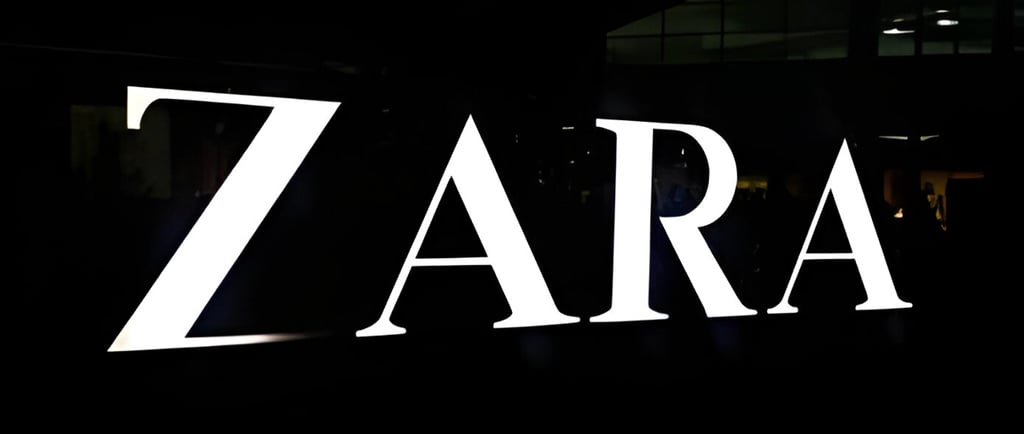Elite Supply Chains - Zara Part 3
Use Zara's Best Practices in Your Own Business
Nick
4/10/20255 min read


In Parts 1 and 2, we examined Zara’s dominance in the clothing industry, and how their ambitious mandate to change their fashion lines bi-weekly helps the retail giant derisk its supply chain by placing smaller bets across an entire year. Few of you reading this are likely to be in the fashion industry, but there are still some actionable takeaways that you are able to implement in your own business.
Localized Manufacturing Hub – But Not Too Localized
If you remember from part 1, Zara manufactures roughly 50% of its clothing in Spain, Portugal, Morocco, and Turkey. The remaining half is strewn across different Asian nations. Higher, theoretically, manufacturing costs in Europe are likely circumvented for a few reasons.
Firstly, Zara’s top four manufacturing nations are quite resistant to natural disasters and even geopolitical conflicts – especially Spain and Portugal. There’s minimal risk on manufacturing becoming destabilized or long delays shipping goods across precarious water ways. Still Zara still has backup plans with its Asia manufacturing hub, and since that hub is also localized within a few, yet, geographically different locations – one catastrophic event would not raddle the other half of its supply base.
For your own business, take a step back and think about your main suppliers, and also try to think where the suppliers of your suppliers receive their goods. Within this web, does everything seem to be localized into one geography? Are there any options in finding suppliers that could mitigate your geographical risk? The trouble here is the sheer quantity of goods the United States relies on from Asian countries, mainly China. It could be there is simply no other option for the products you produce or sell. If that is the case, what can you do to at least broaden your supplier base so you’re not beholden to just one supplier. Being at least dual sourced on key materials for your products can be critical in case your primary business partner gets into unforeseen challenges. Depending on the size of your operation, you may not be the priority to service if you do not bring said supplier enough volume.
A Quick Note on Tariffs
The Trump Administration’s tariff policy has shaken up business planning across the globe. In the short-term it will make a fair amount of goods and materials more expensive, but the long-term effects of the strategy are still to-be-determined. As it becomes apparent to some companies that finally manufacturing back in the United States is more cost effective, many colossal manufacturers have already announced plans to move their operations stateside. Automakers are the most notable, but keep an eye out in the news for other providers and their intentions. Companies that begin to diversify their own supply chains will be less risky geopolitical bets and have the potential to offer better prices.
Derisking Your Forecast
It is almost standard across business to plan at a quarterly level, and I am sure Zara has nearly all its metrics, financials, and KPIs structured in a quarterly format. That doesn’t mean that every other business action has to be considered in 90 day increments. A little insider info – for my day job I am a demand planner. While we plan at the monthly level, it is still incredibly difficult to comprehend what a monthly forecast signifies. All our metrics are at the quarterly level, so if we miss our forecast in January, but overperform in February and March for a clean quarter, everything works out well in the end.
Or does it? The constant up and downs in a manufacturing environment are not ideal. Introducing volatility in a production cycle is impossible, and ramping up and ramping down a factory at will has disastrous down stream effects for the entire process. So while in my quarterly planning exercise above, we may hit our quarterly targets – but how much chaos do we introduce to the manufacturing over those three months?
Zara at least attempts to mitigate this quarterly target problem with its forecasting sprints. By forecasting out over two-week periods, it sends a strong signal all the way down the supply chain on what is needed, for how long, and of course the result of being incorrect is not as disastrous as if it planned one line over an entire quarter.
The problem here is very few businesses have the ability to get away with planning something entirely new so frequently. Fashion trends disappear as fast as they appear, so Zara is in the perfect industry to implement such a solution. My guess is, most readers are not afforded this crazy turnover like Zara, but remember it also a blessing and curse. Zara has perfected this strategy because it knows its end customer so well, and essentially can now tell its customers what to buy – it sets the trend, so to speak. If Zara had no clue what was in vogue for customers, changing clothing lines so frequently would be the same as piling problem, on top of problem, on top of problem, after each two-week sprint.
To get down to a Zara like model, start breaking down your own product offering. Let’s ask a few questions:
1. Are there any areas of your business where you are making “all-or-nothing” bets that could subdivided into smaller decisions?
2. How quickly do you receive and distill customer feedback?
3. What implementations can you install to detect shifts in customer preferences earlier?
Your company may never reach the ruthless efficiency with which Zara has developed a customer feedback loop. That doesn’t mean you shouldn’t try to implement a few solutions. Anything that can help get you a little closer to your customer can go a long way in smoothing out your backend operations.
The Zara Model – A Blue Print for the Modern Supply Chain
Throughout this three-part series, we've deconstructed how Zara transformed traditional supply chain thinking into a competitive advantage. From its unique manufacturing model and rapid product turnover in Part 1, to the mathematical genius behind its risk-spreading strategy in Part 2, and now the practical applications for businesses of all sizes in Part 3, a clear picture emerges.
Zara's success isn't simply about making fashionable clothes faster - it's about creating an integrated system where supply chain decisions actually enhance the core business rather than merely supporting it. By breaking their annual plan into 24 mini-forecasts instead of 4 quarterly bets, Zara reduced volatility by 59%, increased inventory turns by 14-100% over competitors, and freed up valuable working capital that could be deployed for growth.
The ultimate lesson from Zara isn't about mimicking its exact two-week cycles or its European manufacturing hubs. It's about recognizing that in today's volatile business environment, traditional quarterly planning cycles may be unnecessarily risky. By taking smaller, more frequent bets, creating tighter customer feedback loops, and building operational flexibility, businesses in any industry can increase their resilience while improving their responsiveness.
For supply chain professionals, Zara reminds us that our function isn't just about minimizing costs - it's about creating strategic advantage. When you next review your own supply chain strategy, ask yourself: Am I taking unnecessarily large risks that could be subdivided? Do we have mechanisms to learn and adapt quickly? Is our operational model flexible enough to pivot when needed?
In an age of disruption, the winners won't be those who forecast perfectly (can we ever even get there?!?) - they'll be those who design systems that can adapt rapidly when forecasts inevitably miss the mark. That's the true genius of Zara, and the blueprint it offers for supply chain excellence across industries.


